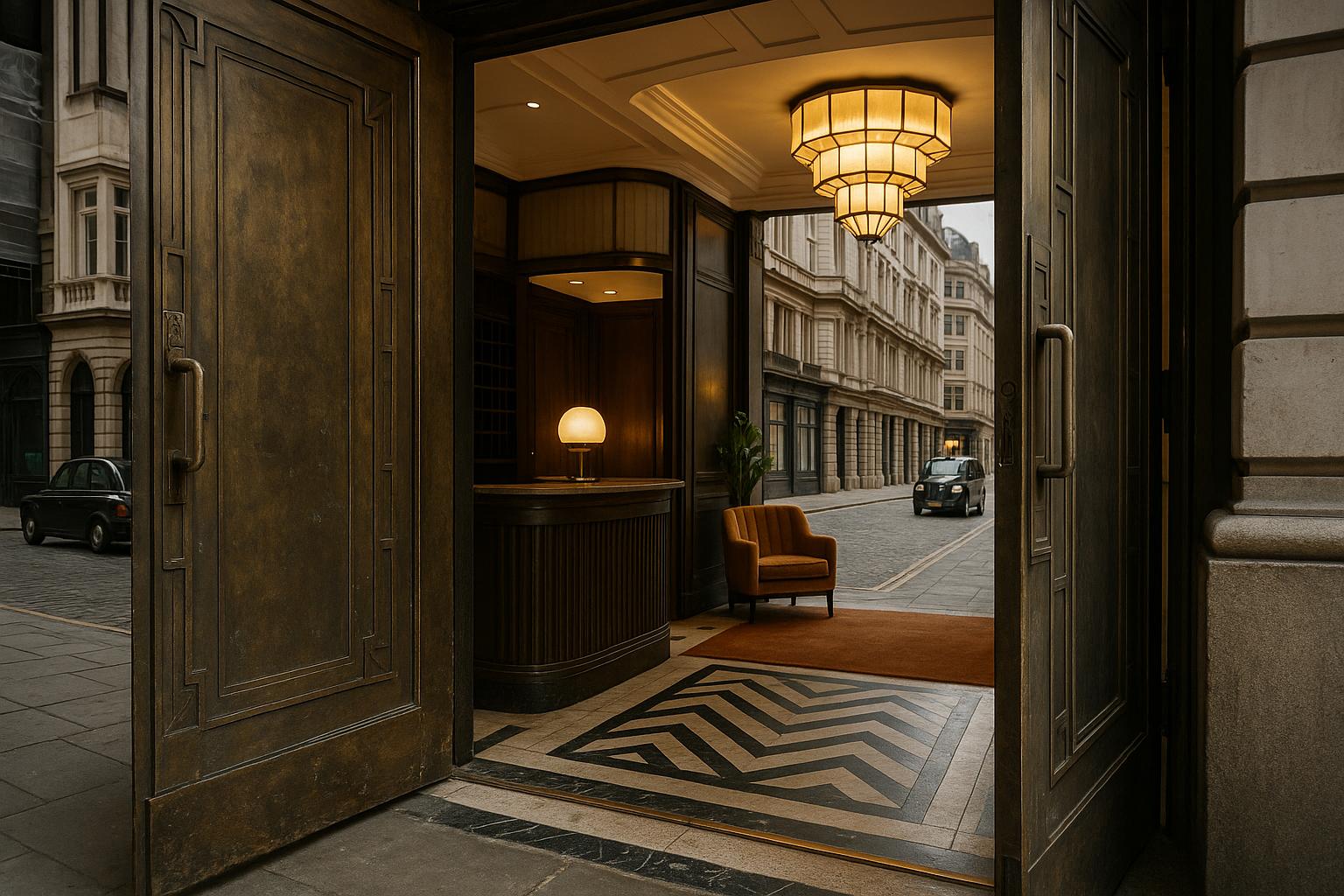The luxury hotel sector in London has traditionally occupied a rarefied space, catering to an elite clientele. However, the post-pandemic period marked by high inflation and widening wealth inequality has catalysed growth not only at the very top end but also in the tier just below, creating a compelling sweet spot for investors and operators alike. According to KSL Capital Partners’ Tina Yu, this segment can leverage luxury pricing dynamics without incurring the equivalent operating costs, offering a balanced proposition for both guests and owners.
Recent data underscore this shift: average room rates for London’s luxury hotels surged 31% between 2019 and mid-2024 but saw some moderation in 2025 due to an influx of new openings. Nevertheless, these elevated figures enable hotels positioned just below the ultra-luxury bracket to achieve rates formerly deemed unattainable, effectively offering a ‘£500-a-night product in a £1,500-a-night market,’ as Orka Investments’ Raoul Malhotra put it. Orka is set to complete The Shepherd in Mayfair this year, a luxury lifestyle hotel developed with Bain Capital, illustrating the ongoing confidence in the upper tier despite some market indigestion caused by new high-end launches.
London’s luxury hotel market is also experiencing structural evolution. Maria Ashton of Accor highlights the rise of ‘collection brands’, softer, more flexible interpretations of luxury that expand architectural and operational possibilities. Increasingly, luxury hotels emanate from conversions of historic buildings rather than new constructions. This approach not only preserves London’s architectural heritage but also aligns with sustainability goals by reducing embodied carbon. Buildings with grand floor-to-ceiling heights and rich histories, such as former banks, office headquarters, and police stations, are being reimagined as luxury hotels, adding appealing narratives that enhance guest experiences, in line with insights from Elliott Wood’s Mark Goodbrand.
The burgeoning luxury market is underpinned by robust demand from high-net-worth visitors. London welcomed 17 million overnight guests in 2024, surpassing Paris by four million, with luxury travellers contributing £30 billion to the UK’s £85 billion tourism economy. The city also boasts the highest number of centi-millionaires in Europe, reinforcing its status as a magnet for affluent tourists and investors alike. This demand is reflected in key performance metrics: luxury hotel occupancy has rebounded to pre-pandemic levels at 82%, with investment in the sector doubling in 2024 and a staggering £4.5 billion forecast for 2025, fuelling the largest wave of new openings since 2014.
Investment into London’s hotel real estate is also soaring, driven significantly by overseas buyers. U.S. investors alone spent £1.9 billion on London commercial real estate in the first quarter of 2024, marking a six-fold increase from the previous year and the highest volume since late 2015. This enthusiasm is buoyed by favourable leasing fundamentals, a strong dollar, and a quicker recovery of the British market relative to the U.S. Notable transactions such as MCR Hotels’ acquisition of the BT Tower and Elliott Management’s West End portfolio are emblematic of this surge.
Despite the buoyancy, competition and economic uncertainty have prompted some luxury hotels to recalibrate pricing. Properties like the Raffles at the OWO and The Peninsula London have reduced their rates by around 20% from their initial post-pandemic launch prices, signalling a cautious adjustment within the segment. This marks a departure from the post-COVID ‘revenge travel’ pricing boom and suggests a more nuanced pricing environment amid intensifying competition.
The dominance of foreign investment and sovereign wealth funds is also reshaping market dynamics. According to Raoul Malhotra, London is evolving similar to Paris, where ownership by entities that can afford patience and do not prioritize immediate profitability allows luxury hotels to maintain pricing power without aggressive discounting.
Adding a cultural dimension to the luxury experience, collaborations like the Mandarin Oriental Mayfair’s partnership with the Mayfair Design District showcase the integration of art and hospitality. Through initiatives such as ‘Elemental Resonance – Nature Reimagined,’ the hotel functions as a living gallery offering curated artist residencies and immersive experiences, further enriching the luxury offering.
Taken together, these factors paint a complex but optimistic picture for London’s luxury hotel sector. High consumer demand, substantial investment inflows, especially from overseas, and innovative approaches to development and branding are driving growth. However, the market is also adjusting to a more competitive environment, with refined pricing strategies and a structural shift towards historic conversions that enhance sustainability and storytelling. The luxury hotel landscape in London is thus expanding its reach, embracing both tradition and transformation in equal measure.
📌 Reference Map:
- [1] (Bisnow) - Paragraphs 1, 2, 3, 4, 5, 6
- [2] (The Walpole) - Paragraphs 4, 5
- [3] (Reuters) - Paragraph 6
- [4] (Hotel Trends) - Paragraph 4
- [5] (The Caterer) - Paragraph 4
- [6] (CPP Luxury) - Paragraph 7
- [7] (Wallpaper) - Paragraph 8
Source: Noah Wire Services
